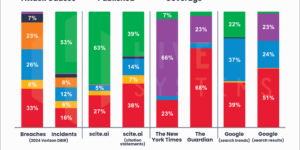“We need to talk.”
What is it about those four little words that strikes fear into the hearts of the bravest business people, including those in the property/casualty insurance industry?
Executive Summary
Drawing from the new book “We Need to Talk,” author and business coach Andrea Lee recommends a three-question model, “The Delta Model,” to productively move stalled or difficult business conversations forward. The model removes excess emotions, hidden agendas and complexity, she says.Enough is enough. It’s time to get rid of the stress these unsaid conversations have on them.
Speaking up to have a tough conversation is heroic. It’s real leadership. People think these are small things, but they’re not. We’re actually betraying ourselves when we don’t have these conversations.
Stop This Meeting: Ever been in an unproductive meeting or even just a stultifyingly dull one?
Stopping a meeting and questioning its purpose is one of the most far-fetched things you can do, and it immediately opens things up. Becoming the person who is able to speak up and tell the truth empowers him or her and everyone else in the room to be able to say what needs to be said. Change is possible when people speak up.
Say “No” More Often: Everyone can become better at challenging business conversations, and it can start by finding your positive “no.” We need to say no more often. We get overwhelmed by saying yes to too many things. (Some of the yeses become nos anyway, so we may as well say no from the beginning.)
Ask why you’re saying the no. For example, why would you say no to projects that are painful and don’t pay enough?
Answer: So you can say yes to projects that pay higher fees and develop your skills, business experience and acumen. Find the yes behind the no and empower your no.
Give Emotions Their Proper Place: A lot of conversations don’t happen because we’re afraid of our emotions. Breaking up with a business partner, firing that nasty client, or standing up and charging your worth—these are high-stake actions.
Instead of fearing your emotions, let them fuel you. Think of them as courage vitamins.
Use the Delta Model: If you’re having a conversation in which you’re trying to “get somewhere” or help someone else get somewhere, just take these three simple steps of “The Delta Model”:
- Step #1: Ask your conversation partner: “Where are you at right now?” Then listen carefully and find out where your conversation partner is right now.
- Step #2: Ask your conversation partner: “Where do you want this to go right now?” Then listen carefully and find out where your conversation partner wants to go.
- Step #3: Together, come up with suggestions for how you can get from A to B.
It’s surprisingly simple and yet delivers amazing results when people learn how to use it in a savvy way. Even if the solution isn’t as simple, the structure for the conversation can be. The difference is the change that’s desired. The more truthful the answers are to each question, the more robust the results, and that’s where some skill and experience will help.
You can even whip out the questions when you’re put on the spot to lead any kind of conversation, and you’ll see how well they serve you.
If you’ve never experienced being the “Switzerland” in a given conversation and think you might like it, there’s one more reason to make the Delta Model one of your go-tos as a business person. People readily rally under a structure that, in its simplicity, doesn’t seem to have a hidden agenda. You might be surprised at how much more trustworthy you’re perceived to be when you lead in this way.
Heated debates and tough negotiations can also thrive under the three-step model, because excess emotion gets removed.
The most complex conversations often have a great deal of jeopardy attached, for example, when a big consulting firm gets a call from its biggest client saying, “We’re unhappy.” In cases like these, you should consider throwing everything out and carefully offering the Delta questions. By putting just a few key things back on the table for the conversation, you can often sidestep the baggage and history that’s gumming up the machinery.
To make change, we need to be fearlessly candid about our reality. Our ability to have great conversations about the toughest of things is going to play a huge role in creating a world we love living in. We have the tools to do it. Now we just need to use them.




















 California Vocational School CEO Charged With 23 Counts of Insurance Fraud
California Vocational School CEO Charged With 23 Counts of Insurance Fraud  Slideshow: Carrier Management’s 2024 Top Editor’s Picks (Unlocked)
Slideshow: Carrier Management’s 2024 Top Editor’s Picks (Unlocked)  Study: Widening Gap Between Cyber Attack Causes, Public Perception
Study: Widening Gap Between Cyber Attack Causes, Public Perception  Wildfire Smoke’s Health Risks Linger Long After Homes Escape Burning
Wildfire Smoke’s Health Risks Linger Long After Homes Escape Burning 





